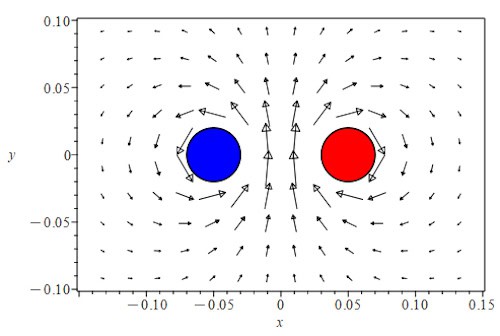 <><>
<><>Vacuum tunnelling – an exotic process by which empty space can become temporarily filled with virtual particles when an extremely strong electric or magnetic field is applied to it – has never been observed in an experiment. This is because the field required to produce this “Schwinger effect” in the laboratory is simply too high and is usually only generated during intense astrophysical events. Theoretical physicists at the University of British Columbia (UBC) in Canada are now saying that an analogous effect could occur in a much simpler, tabletop system. In their model, a film of superfluid helium can be substituted for the vacuum and the superfluid flow of this helium for the massive field.
The physicist Julian Schwinger was the first to put forward the effect that now bears his name. In 1951, he hypothesised that applying a uniform electric field to a vacuum, which is theoretically devoid of matter, would cause electron–positron pairs to spring into existence there. The problem is that this field needs to be, literally, astronomically high – on the order of around 1018 V/m.
Pair production can also occur in superfluid helium-4
A team led by Philip Stamp says that a similar type of spontaneous pair production can occur in superfluid helium-4 just a few atomic layers thick and cooled to very low temperatures. In this liquid, which behaves essentially like a perfect, frictionless quantum vacuum state, pairs of quantized vortices/anti-vortices (spinning in opposite directions to each other) should occur in the presence of strong fluid flow. This process should be analogous to the Schwinger mechanism of vacuum tunnelling.
“The helium-4 film provides a nice analogue to several cosmic phenomena, such as the vacuum in deep space, quantum black holes and even the early the universe itself (phenomena we can’t ever approach in any direct experimental way),” says Stamp. “However, the real interest of this work may lie less in analogues (which may or may not accurately portray the ‘real thing’) and more in the way it alters our understanding of superfluids and of phase transitions in two-dimensional systems.”
“These are real physical systems in their own right, not just analogues. And we can do experiments on these.”
According to physicist Warwick Bowen of the University of Queensland in Australia, who was not involved in this study, the new work is “very interesting” and “exciting” because it describes a new mechanism to produce vortices. “This description might even tell us more about the microscopic origins of turbulence and represents a new kind of quantum phase transition,” he tells Physics World. “Importantly, the effect appears to be accessible with extensions to existing experimental techniques used to study thin superfluid helium films.”
Physicist Emil Varga of Prague’s Charles University in the Czech Republic, who was not involved in this study either, adds: “The work seems quite rigorous and might help clean up some outstanding discrepancies between theory and experiment. And the possible analogy with the Schwinger effect is, as far as I can tell, new and quite interesting and fits well into the emerging field of using superfluid helium-4 as a model system for high-energy and/or astrophysics.”
Stamp and colleagues say they would now like to better understand the vortex effective mass and look at analogues in full quantum gravity with no “semiclassical approximations”. They will also be focusing on how the effect they propose will lead to phenomena like quantum avalanches – which are different to quantum turbulence – and in particular, how it modifies the so-called “Kosterlitz-Thouless” picture of 2D transitions.
They report their present work in PNAS.
The post Schwinger effect appears in a 2D superfluid appeared first on Physics World.

